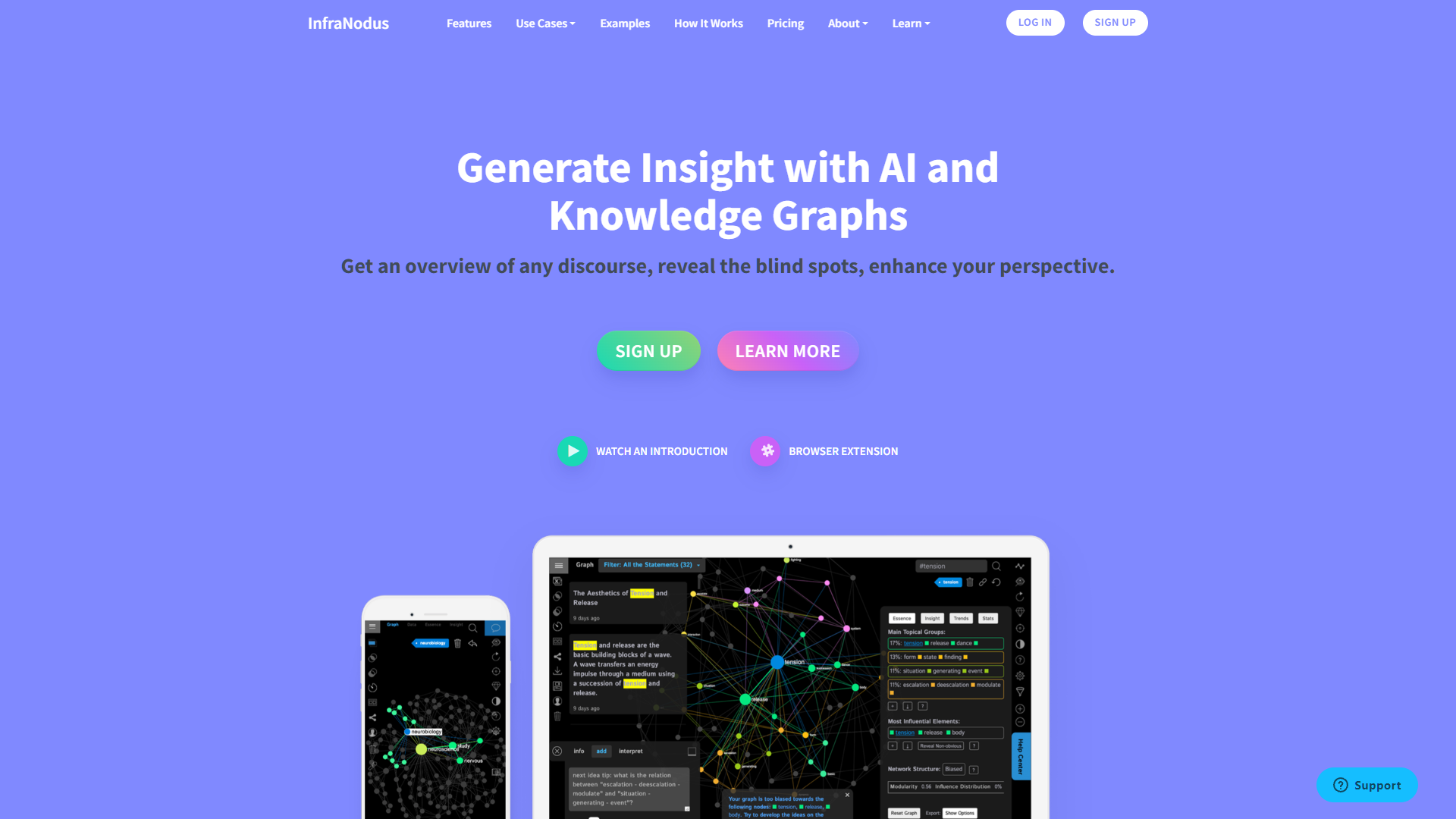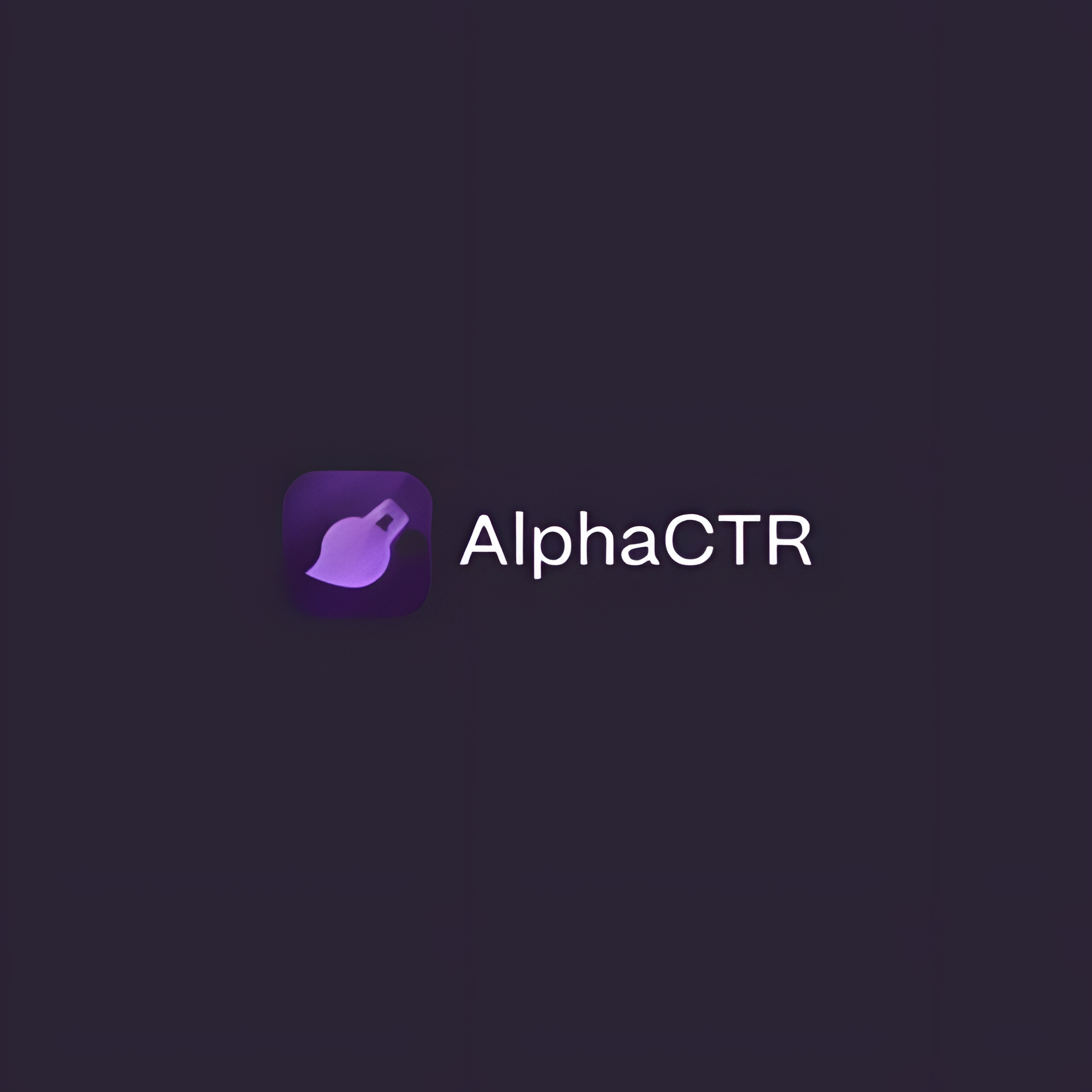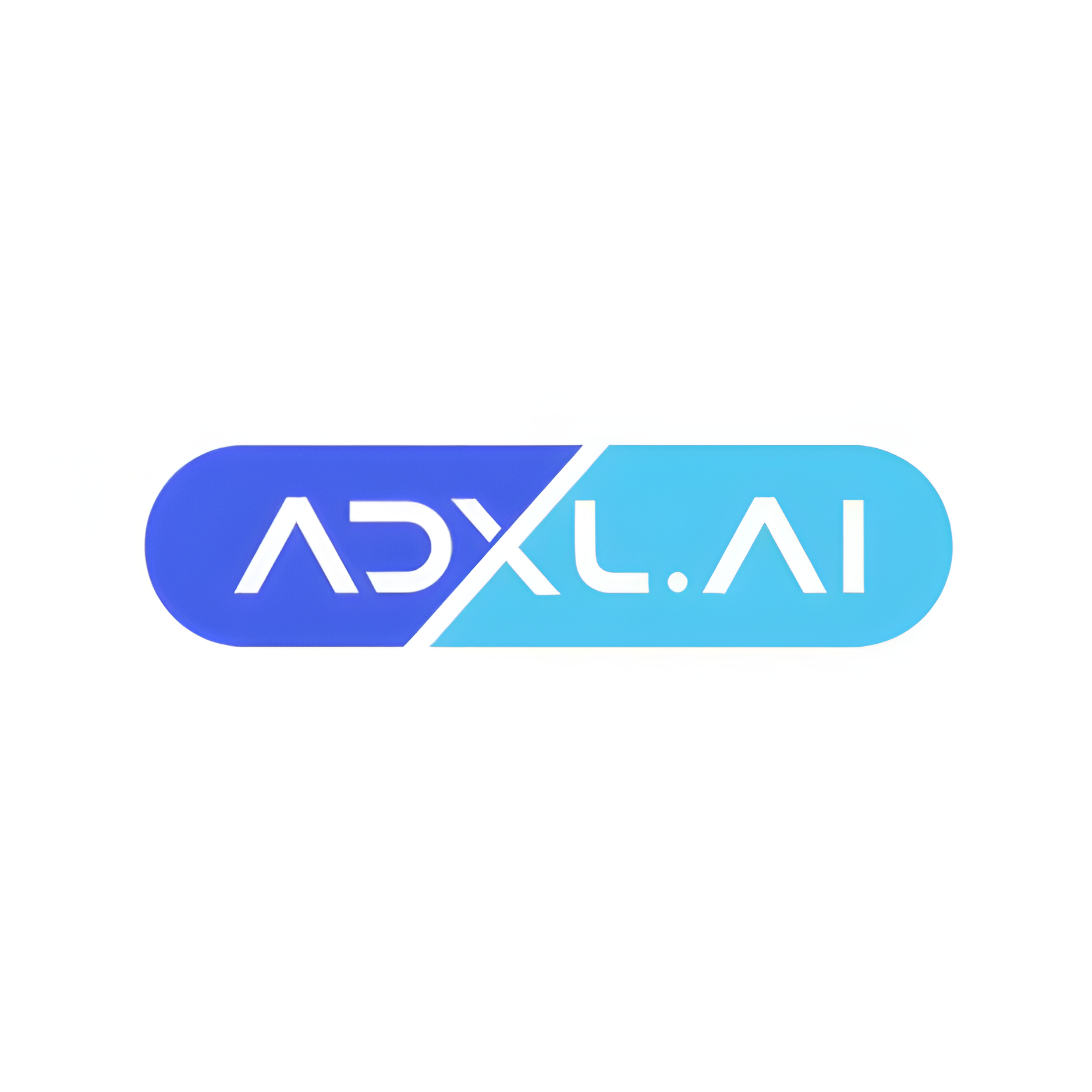Overview
Infranodus is a cutting-edge tool designed to enhance text analysis and data visualization. It offers users a unique way to discover, analyze, and visualize the underlying structures within texts or datasets. By converting text into network graphs, Infranodus allows users to see the connections between different concepts, identify the most influential ideas, and uncover patterns that are not immediately obvious through traditional linear reading or analysis methods.
This tool is particularly useful for researchers, data analysts, content creators, and anyone interested in gaining deeper insights from textual data. Infranodus supports multiple languages and can analyze any text, from scientific papers to social media posts. It features various analytical tools, including sentiment analysis, topical clustering, and trend identification, which help users to understand the context and prominence of themes within the data.
Moreover, Infranodus provides an interactive platform where users can manipulate the graph, explore different perspectives, and even share their findings with others. Its ability to integrate with other data sources and export data in various formats makes it a versatile tool for comprehensive text analysis and research projects.
Key features
- Text network visualization: Visualize your text as a network to see the main connections and discover patterns.
- Contextual keyword analysis: Identify the most influential words and phrases in a text to understand key themes.
- Gap and bias detection: Detect what's missing in your text and uncover potential biases in the content.
- Customizable graphs: Adjust and customize the network graphs to focus on different aspects of your text analysis.
- Collaborative features: Share your graphs and work collaboratively with others to enhance collective understanding.
- Multiple language support: Analyze texts in various languages, making it versatile for global use.
 Pros
Pros
- Real-time analysis: Quickly process and analyze text data in real-time, enabling immediate insights and decision-making.
- Interactive data exploration: Explore data points interactively to understand deeper nuances and relationships within the text.
- Scalable processing: Handle large volumes of text efficiently, making it suitable for both small and large-scale projects.
- Data export options: Easily export graphs and data to various formats for further analysis or presentation purposes.
- API integration: Integrate with other tools and platforms using the API to enhance data analysis workflows.
 Cons
Cons
- Steep learning curve: The interface and features can be overwhelming for new users, requiring time to learn effectively.
- Limited customization options: Users may find the customization options for visualizations and data analysis somewhat restricted.
- High subscription cost: The pricing model might be prohibitive for individual users or small organizations with limited budgets.
- Performance issues: With large data sets, the tool can experience slowdowns or reduced responsiveness.
- Minimal integration capabilities: Lacks extensive integration with other data tools and platforms, which could limit workflow efficiency.

















